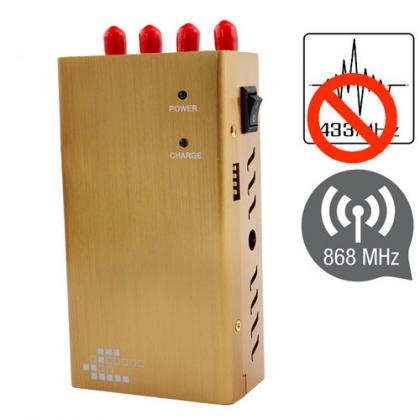The basic principle of a cell phone jammer is to emit the same radio frequency signal as a mobile phone. Because the frequency is the same, the mobile phone cannot distinguish which signal is a regular base station signal, thus realizing "interference". As long as there is a machine with the same frequency as the phone, when the base station tries to connect to the phone, it will make a lot of "noise". You will find that the phone signal is unrecognizable, so you will refuse to communicate with the phone.

In the beginning, mobile phone jammers blocked only one set of frequencies, like 2G, while complex jammers could simultaneously block multiple types of networks, such as 2-3-4-5G.
So how is this type of multi-network interference achieved?
In fact simple.
In other words, repeat the interference bands corresponding to these three signals cyclically, and cover these three interference bands at the same time. The interval of this cycle is so small that the mobile phone has no chance to speak and can only sit and do it quietly.
Covers 2/3/4 / 5G, what about bluetooth and wifi?
It doesn't matter, it can be done easily.
Mobile jammers have evolved again, adding Bluetooth and wifi frequency bands to the scanning range, so that several common communication methods in society are completely covered.
Many people don't understand the difference between the three methods of Bluetooth, Wi-Fi, and mobile data. They appear to be wireless communication technologies. In fact, the main difference between them is in the frequency band. In mobile communication technology, 2G mainly operates in the 900-1700 MHz frequency band, 3G operates in the 1900-2100 MHz frequency band, 4G operates in the 2300-2500 MHz frequency band, and 5G operates in the 3400-3600 MHz frequency band. Bluetooth and WiFi operate at 2.4 GHz.
In this way, Dazhan Electronics' R&D engineers can accurately identify the communication frequency band and develop cell phone signal jammers of the same frequency band, in order to achieve the goal of fully protecting wireless signals. mobile phones, which is a huge boost to education. and fairness for reviews.
